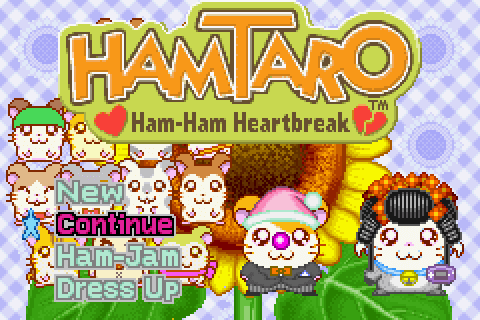
I can’t believe I forgot to write ’bout Hamtaro: Ham-Ham Heartbreak for my GBA tribute. Now’s the perfect time.
Long before that there My Li’l Pony: Friendship is Fatalities1 & those there bronies, Hamtaro was the emasculating franchise for a younger me2, who was ne’er that masculine, anyway. Back when everyone else was bitching ’bout Hamtaro ruining Toonami, I was complaining ’bout Tonami ruining Hamtaro—& I still stand by it.
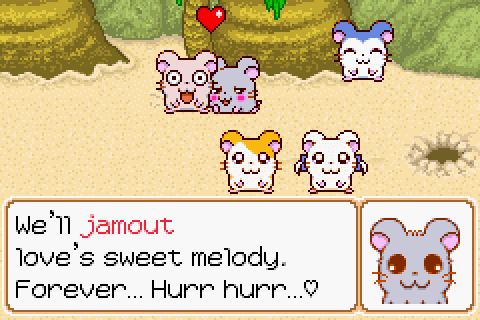
Anyway, Nintendo—yes, Nintendo themselves, with Shigeru Miyamoto himself acting as director3—created 2 rather good Hamtaro games for the Game Boy Color & Game Boy Advance. The 1st was Hamtaro: Ham-Hams Unite! & was quite underrated. But this is a GBA tribute, & Valentine’s Day, so I’m not going to write ’bout it. ’Stead, let’s talk ’bout the mo’ popular sequel.
Both games had similar gameplay mechanics: they were both essentially adventure games, but with less emphasis on collecting & mixing items, & mo’ on collecting & using “Ham Chat.” “Ham Chat” was a special hamster language added onto English—or whatever language one was playing the game on. Pressing A on characters or things caused a prompt with a certain list o’ words to pop up. Selecting different words would cause different things to happen. However, if you didn’t know the word, it’d be just ?s, & you couldn’t select it. You learn words by hearing other characters use them. Thus, the way this mechanic worked was you went round learning words so you could learn mo’ words & advance the plot further.
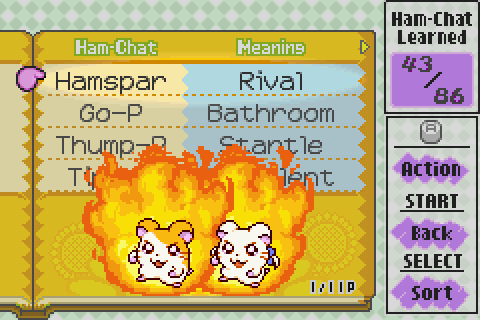
In both games, you start with 4 main words which are the default: “Hamha,” which is just the basic “hello” & is used to start conversations with other characters; “Tack-Q,” which allows you to tackle forward; “Hif-Hif,” which allows you to sniff things, & is usually used for picking up items; & “Dig-Dug,” which was used for digging in dirt, & usually used for finding items in conspicuous dirt clumps or digging in warp holes.
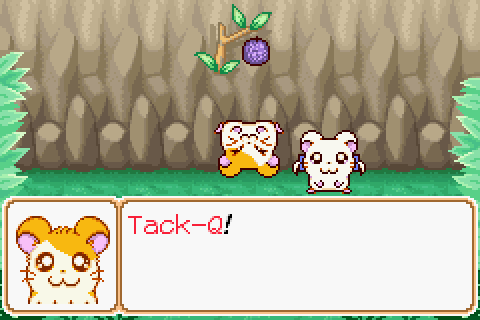
One may ask why Hamtaro needs to learn the language a 2nd time after the 1st game. The sequel answers that: klutzy Hamtaro trips & falls into water, ruining his dictionary. ’Cause he has the memory o’ a trout, he has to relearn everything.
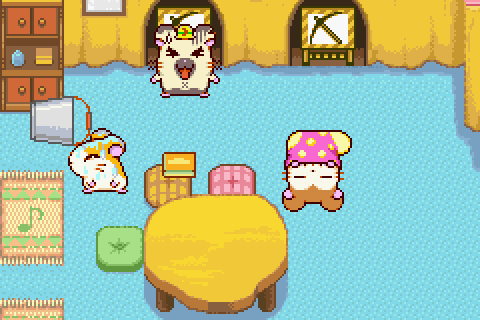
The main difference ’tween the 2 games is the plot: the 1st game had a simple plot wherein you just had to find all o’ the other “Ham-Hams” & convince them to return to Boss’s clubhouse for some surprise he wants to show off. It wasn’t much o’ a story, but it did give the player some control o’er what order to collect the Ham-Hams.
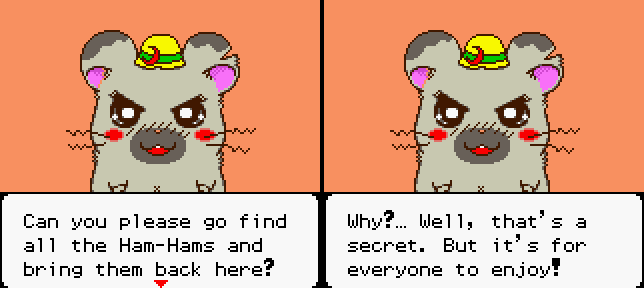
The 2nd game has a mo’ involved plot, albeit not one that’d e’er win a Nobel Prize: a hamster dressed up in a black devil costume named Spat hates love for no given reason & so tries to stir up trouble & break up relations. This is done through either subtle manipulation or good ol’ outright assassination attempts. Spat gets his name for his love to say “pfpth.” He also likes to laugh a lot, has the best music in the game, & is oft compared to Final Fantasy VI’s Kefka. He’s also the best character in the game.
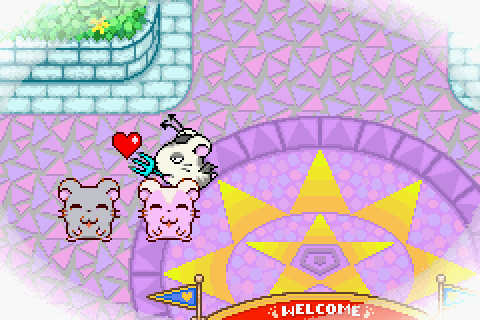
’Nother difference ’tween Heartbreak & its predecessor is that you have 2 protagonists in this game, which are sometimes used for tag-team Ham-Chat moves, like “Hamlift,” wherein 1 lifts the other up to reach greater heights. The 2nd protagonist is Bijou, a character embroiled in 1 o’ Hamtaro’s many love triangles: the stoic brute with the heart o’ gold, Boss, is in love with her, but she’s in love with Hamtaro, who is the stock idiot hero too dumb to understand love. Like I said, Hamtaro’s not exactly Hemingway—& sadly was too early for the My Little Pony faux-intellectualist thematic analyses4 that litter the internet by those kinds o’ adults who strangely indulge in kids media while also being embarrassed by it, & rather than either getting o’er whatever preconceived notions they have or not watching the media, try to pretend the material is something it’s not.
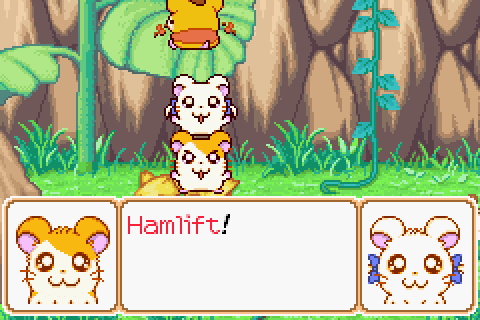
While Heartbreak had a mo’ linear level progression, its level themes were a bit mo’ interesting: while Unite had mo’ domestic areas, like a school, a shop, a park, with a sky garden as the most exotic level, Heartbreak had a haunted manor, an amusement park, a jungle, & Spat’s very own tower, which made the story progression mo’ memorable. Then ’gain, I have a bit o’ nostalgia for the mo’ laid-back levels in the 1st game, too. Both had boring grasslands as the 1st level, too, but that’s by the Queen’s law, section 21 o’ the “Boring Beginning Act.”
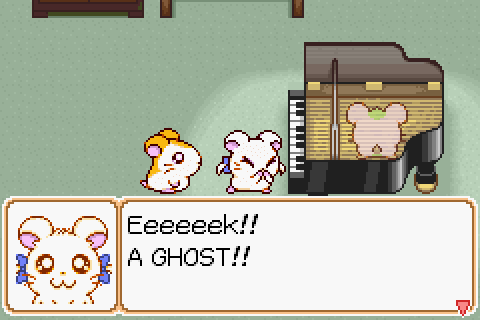
Heartbreak also had mo’ minigames & 2 bosses, though the bosses weren’t much, & the minigames were oft annoying or filler. The bosses were mainly just timing a certain Ham-Chat technique @ the right time & in the right place, while avoiding things for the final boss. Meanwhile, you can make dances out o’ Ham-Chat words, find songs for said dances, & collect rocks so you can rub them into jewelry, which can be used to get accessories to wear on the title screen.
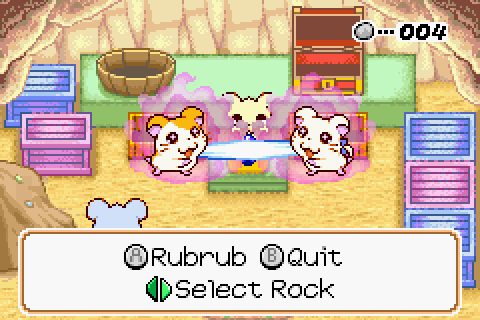
There’s also a dance competition that requires you to use some arcane combination o’ words to 100% complete the game. I think the only “hint” one could get for which words is that they’re some o’ the last words you learn, forcing this to be the last thing you unlock in the game.
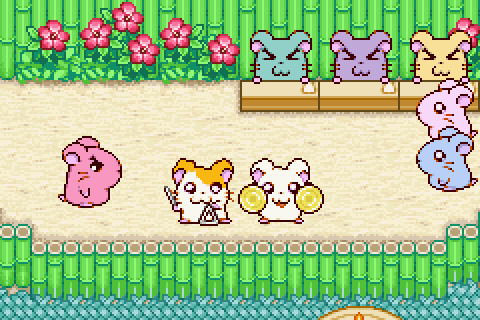
Music
It’s so good, it deserves to be mentioned twice.
Catchy, but repetitive. Good thing you’ll only be on the map screen for a couple seconds @ a time.
A hum-dum theme that fits the hum-dum tone o’ the clubhouse. Somewhat repetitive, too, though you may spend a li’l mo’ time here.
A catchy surf rock song for a surf-themed beach.
My subconscious tells me this song is a bit plagiaristic, but I can’t think o’ what it might be copying.
Catchy for a slow, haunted theme. I ‘specially like the soft, sputtering percussions.
Not sure if I should give them credit for copying a song from Beethoven. Not a bad rendition, though.


